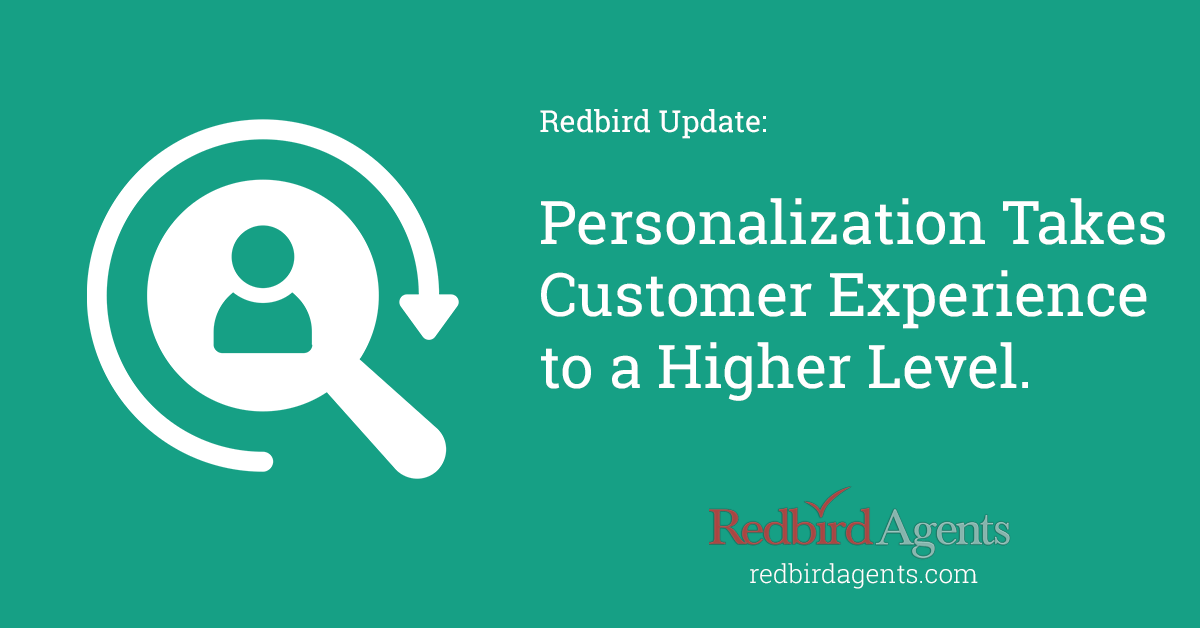
We have reached a point with technology where all the cool stuff you have heard about–artificial intelligence (AI), machine learning and others–is finally starting to deliver on the bold promises.
As one of our five core capabilities to reach this new digitally-focused customer, personalization is the most complex because it requires equal parts people, process and technology.
And customers are the driving force behind personalization. What we have always suspected is finally coming true: customers want what they want (not what you want them to have) and they want it now.
The insurance industry has been slow to adopt capabilities that would give customers more control over the purchase and service experiences.
Our original article on innovation in insurance referenced an interesting research study by agentofthefuture.com that identified the characteristics of agencies that were high adopters of digital. The bottom line from that study gave us some intriguing insights on what many of us already knew: high adopters of digital capabilities grow faster than low adopters.
Here’s how McKinsey described personalized marketing in a recent report:
“Personalized marketing is when you tailor your marketing based on the data you’ve collected from your contacts. This includes interests, shopping preferences, purchase history, and more. When you use this data to customize the content your contacts receive via email, ads, and other platforms, you’re using personalized marketing.”
McKinsey goes on to elaborate in its research:
- “Seventy-one percent of consumers expect companies to deliver personalized interactions. And seventy-six percent get frustrated when this doesn’t happen.
- “Personalization drives performance and better customer outcomes. Companies that grow faster drive 40 percent more of their revenue from personalization than their slower-growing counterparts.”
How to personalize the experience? Low adopters of digital may be behind, but you’re not out.
The most effective personalized marketing comes from combining the power of technology to creatively leverage your customer data. High adopters of digital know this well. The more good data they collect is the fuel for the incremental growth described in the agentofthefuture.com research.
High adopters have invested in both the concept and the reality of digital.
So, what’s a low adopter to do?
The Harvard Business Review identified five components in its article The Essential Components of Digital Transformation. While geared toward larger organizations, the simplicity of its point of view struck us as perfect for insurance agencies looking to recast their operation in a new direction.
- People. “Digital transformation starts with people, which is a useful reminder that whenever we talk about data — especially valuable data — there are humans at the end of it. For most organizations, the people aspect of transformation refers to the access they have to consumers, clients, and employees. Historically, these relationships yielded poor or dispersed records. Think about analog and informal small businesses, such as a stand in a Turkish bazaar: the salespeople have a great deal of access to, and knowledge of, their customers and clients, but it’s all “trapped” in their minds. In the same way, a London cab driver or a Parisian bistro waiter might have in-depth knowledge of their customers and what they want, or a small business founder might know the 20 employees that make up her workforce rather well, without needing much tech or data. But what happens when an organization becomes too large or complex to know your customers or employees on a personal basis?” Redbird’s take: It doesn’t take an insurance agency long to grow beyond its ability to touch its customers in a way that drives an exceptional relationship. In fact, more insurance agencies reach out only when they need something.
- Data. “If you want to scale the knowledge you have about your customers and employees, and replicate it across a big organization and in far more complex and unpredictable situations, you need to have data — widely accessible and retrievable records of interactions with consumers, employees, and clients. This is where technology can have the biggest impact — in the process of capturing or creating digital records of people (e.g., what they do, who they are, what they prefer, etc.). We call this “digitization,” or the process of datafying human behavior, translating it into standardized signals (0s and 1s). It is useful to remember this, because the real benefits from technology are not “hard” (i.e., cheaper systems or infrastructure), but “soft” (i.e., capturing valuable data).” Redbird’s take: “Soft” data is incredibly hard to come by. There is no big database in the sky. This comes from an institutional investment in the customer experience and relationship. Every day your agency kicks this can down the road is another day your high adopter competitors separate themselves even more.
- Insights. “Although data has been hailed as the new oil, just like with oil, the value depends on whether we can clean it, refine it, and use it to fuel something impactful. Without a model, a system, a framework, or reliable data science, any data will be useless, just like 0s and 1s. But with the right expertise and tools, data can be turned into insights. This is where technology gives way to analytics — the science that helps us give meaning to the data. To the degree that we have meaningful insights, a story, a notion of what may be going on and why, or a model, we will be able to test this model through a prediction. The point here is not to be right, but to find better ways of being wrong. All models are wrong to some degree, but some are more useful than others. Redbird’s take: You don’t have to hire a team of data scientists. You will need a competent partner and/or systems to kick-start the process of meeting customers where they are.
- Action. “But even getting to the insights stage is not enough. As a matter of fact, the most interesting, captivating, and curious insights will go to waste without a solid plan to turn them into actions. As Ajay Agrawal and colleagues argue, even with the best AI, data science, and analytics, it is up to us humans to work out what to do with a prediction. Suppose that your insights tell you that a certain type of leader is more likely to derail — how will you change your internal hiring and development process? Or what if it tells you that customers dislike a certain product — how will this influence your product development and marketing strategy? And suppose that you can predict if some clients are at risk of going to your competitors, what will you do? AI can make predictions, and data can give us insights, but the “so what” part requires actions, and these actions need the relevant skills, processes, and change management. This is why talent plays such a critical role in unlocking (or indeed blocking) your digital transformation. Redbird’s take: AI may take all of our jobs someday, but that day isn’t today. Having smart, experienced people on the front line of this new journey–the digital line–may be the most critical HR issue you will face. This is not a place to try to save money.
- Results. In the final stage of the process, you can evaluate results or impact. Except this is not really the final step — after you evaluate results, you need to go back to the data. The results themselves become part of the new, richer, dataset, which will be augmented and improved with the findings of the process. In this iterative process or retroactive feedback loop, you enable your insights to become more predictive, more meaningful, and more valuable, which itself gives more value to the data. And in that process, you enhance and develop the people skills that are needed to produce a great synergy between humans and technology.”
Hard work and good intentions aren’t enough anymore for insurance agencies behind the digital curve. Customers expect your data about them to make their life better and easier. They expect you to know what they want and when they want it.
There’s no time like the present…


